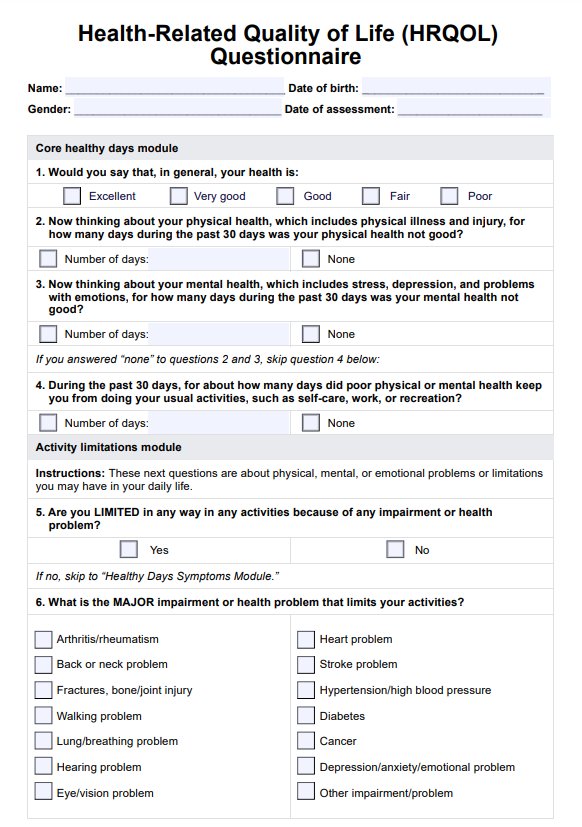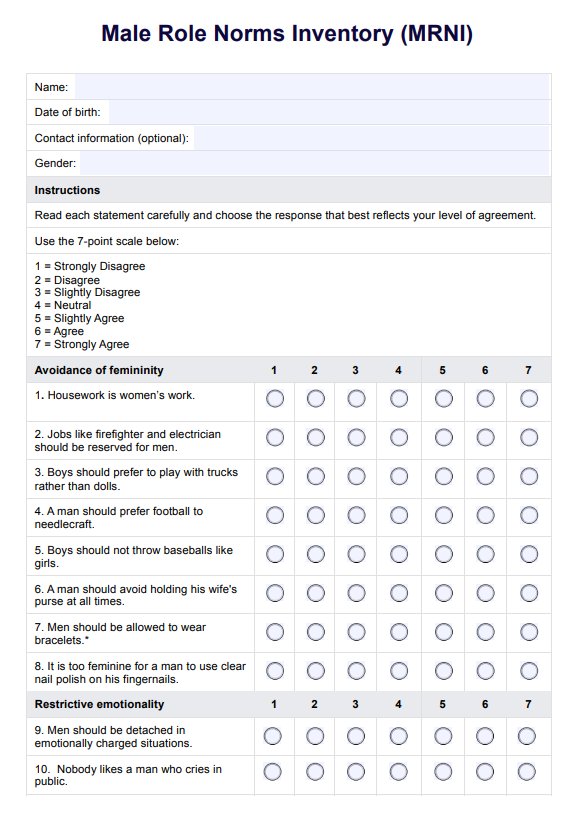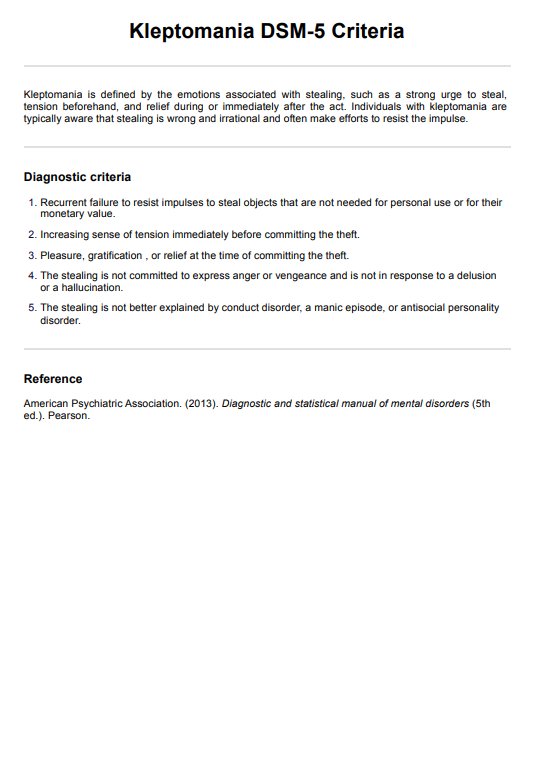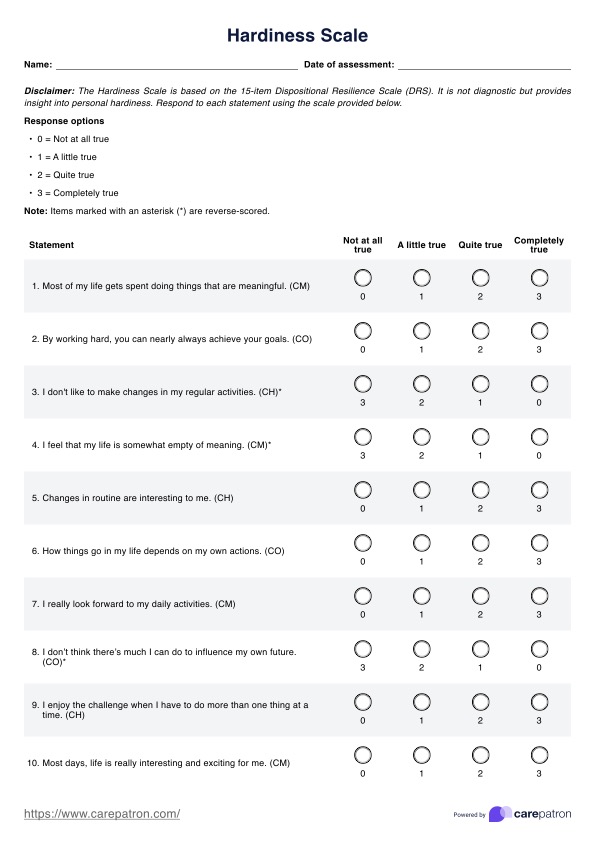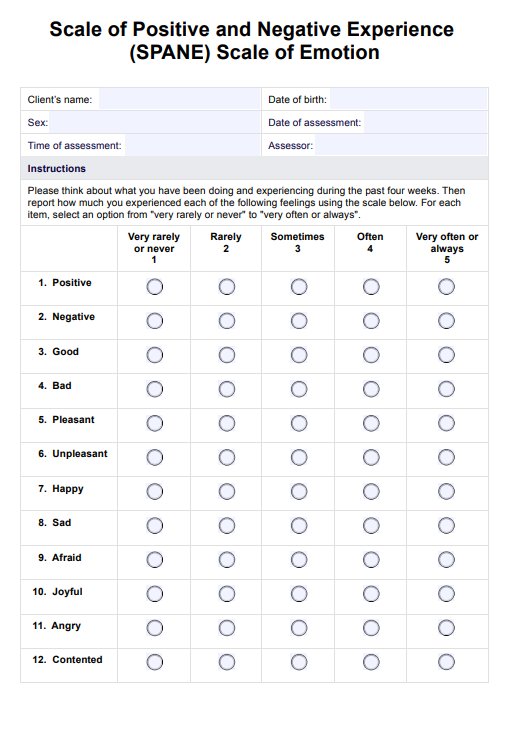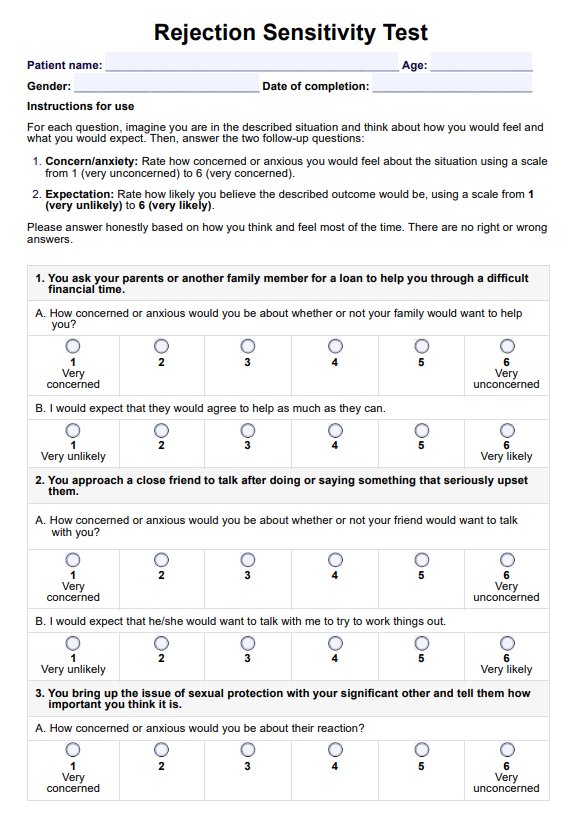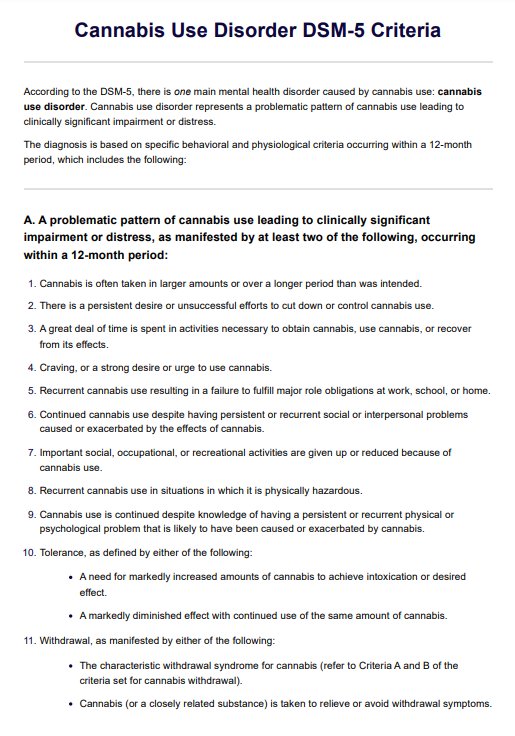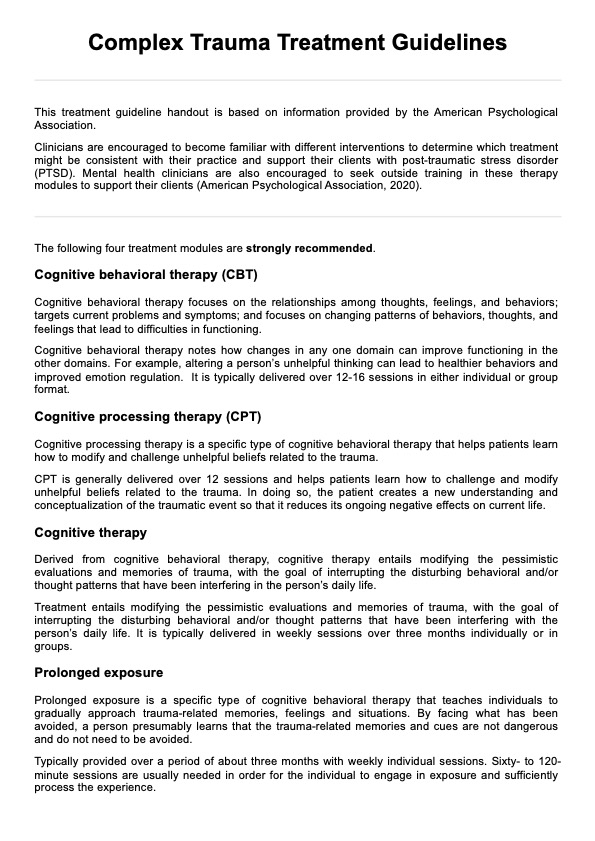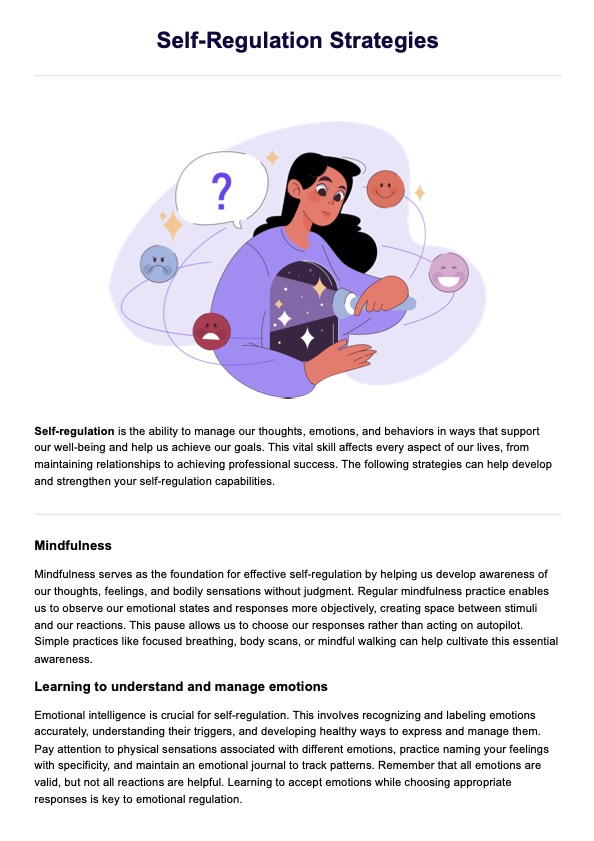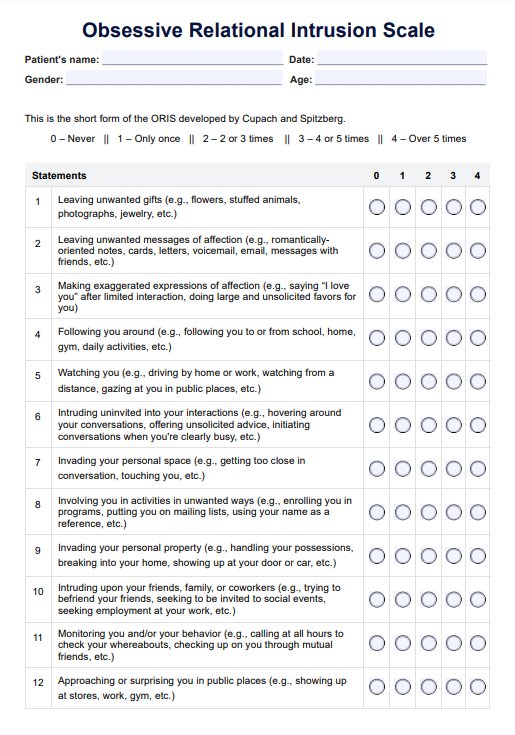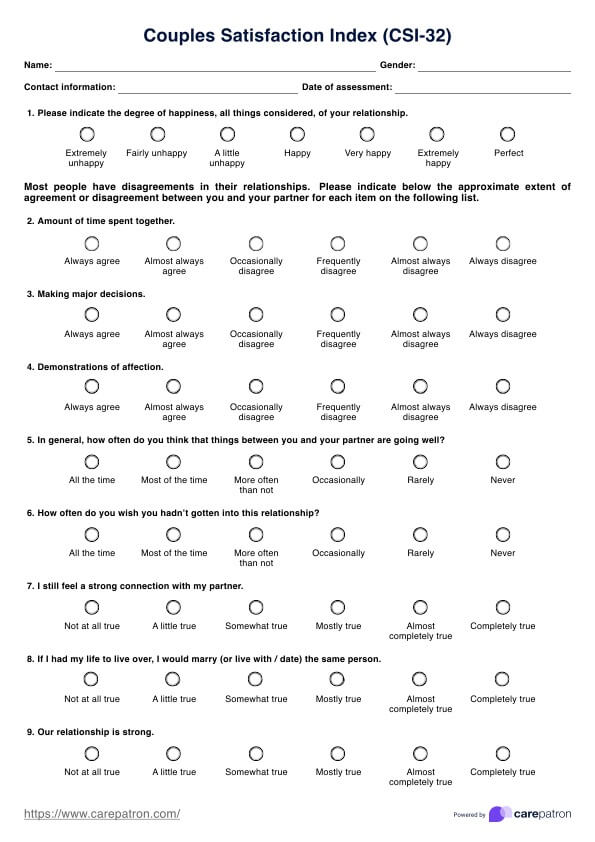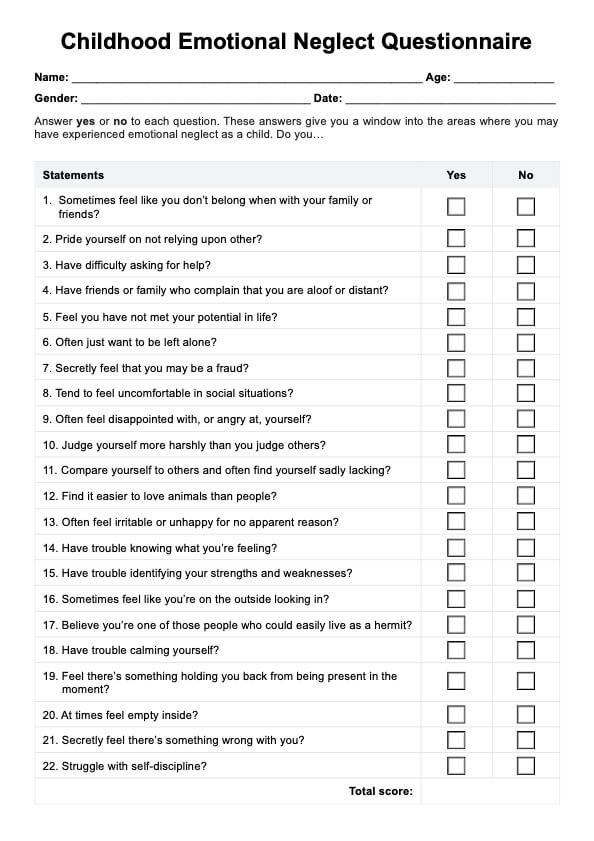Trypophobia Test
Discover our comprehensive Trypophobia Test and learn how to assess your aversion to patterns of holes or bumps. Download our free PDF template today!


What is Trypophobia?
Trypophobia is the fear or aversion to irregular patterns or clusters of small holes, bumps, or textures. While it is not an officially recognized phobia, many people experience discomfort, anxiety, or physical symptoms when exposed to such patterns. In fact, around 17% of children and adults experience trypophobia to some degree (that's about 1 in 6 people!). Examples of trypophobic patterns include honeycombs, lotus seed pods, and porous surfaces.
A is an informal self-assessment tool designed to help individuals gauge their level of discomfort or anxiety when imagining or encountering images with clustered holes, bumps, or similar patterns. This test may provide insight into one's sensitivity to trypophobic patterns but is not a diagnostic tool. There is no known cause, however, trypophobia is commonly associated with OCD.
Common Trypophobia Triggers
There are various common triggers which can bring on trypophobic episodes. These include the following:
- Cheese with holes
- Honeycombs
- Sunflowers
- Lotus seed pods
- Skin on reptiles
- Sponges
- Fruits with small seeds
- Insects and bees
- Shoe soles
Trypophobia Symptoms
Trypophobia can present differently across individuals. Common symptoms include the following:
- Rapid breathing
- Fast heart rate
- Pale skin
- Sweating
- Dry mouth
- Chills
- Goosebumps
- Nausea
- Shaking
- Strong feelings of disgust or terror
If an individual suspects they have Trypophobia or other anxiety-related concerns, they should consult a mental health professional for a proper assessment and potential treatment options. There is no definite cure, however, treatment could include talk therapy or exposure therapy.
Our Trypophobia Test template is available as a free PDF download, offering a convenient way for individuals to assess their aversion to trypophobic patterns. The template includes step-by-step instructions, scoring guidelines, and an example of a completed test.
Trypophobia Test Template
Trypophobia Test Example
How does this Trypophobia Test work?
Understanding your sensitivity to trypophobic patterns can be essential in addressing any related anxiety or discomfort. The Trypophobia Test offers an easy and informative way to assess your aversion to clustered holes, bumps, or similar patterns.
Following the step-by-step process, you can gauge your reactions to various images and gain insight into your potential sensitivity to trypophobic patterns.
Let's explore how this test works and the steps involved in using and filling out the template.
Step 1 - Download
Download the free Trypophobia Test template in PDF format.
Step 2 - Read instructions
Carefully read the instructions and descriptions of the images in Section I of the test.
Step 3 - Rate statements
Rate your level of discomfort or anxiety for each image on a scale of 1 to 5, with one being "not uncomfortable at all" and 5 being "extremely uncomfortable."
Step 4 - Calculate score
Calculate your total score by adding up the ratings for all ten images.
Step 5 - Interpret score
Review the scoring guidelines to determine your level of aversion to trypophobic patterns.
Step 6 - Complete closing questions
Complete Section II of the test by answering "Yes" or "No" questions about your experiences and feelings about trypophobic patterns.
Scoring
The scoring for the Trypophobia Test is based on the sum of your ratings for the ten images. The higher your score, the greater your aversion to trypophobic patterns.
The scoring ranges are:
- 10-20: Mild or no aversion to trypophobic patterns
- 21-30: Moderate aversion to trypophobic patterns
- 31-40: Strong aversion to trypophobic patterns
When to use these Trypophobia assessments?
These Trypophobia assessments are appropriate to better understand your sensitivity to trypophobic patterns or help someone else gauge their aversion. The test can also be a useful starting point for discussing concerns with a mental health professional.
Self-exploration
If you have ever felt uneasy or anxious when encountering patterns of holes, bumps, or textures, the Trypophobia assessment can help you better understand your sensitivity to such patterns.
By taking the test, you can gain a clearer insight into the degree of your discomfort, which can be helpful for self-awareness and personal growth.
Supporting others
If you know someone who experiences discomfort or anxiety when exposed to trypophobic patterns, you can use the assessment to help them gauge their aversion. By discussing their test results, you can support and encourage them to seek professional help if necessary.
Education and research
Educators and researchers interested in Trypophobia can use these assessments to study the prevalence of this aversion in various populations. By collecting data from many participants, researchers can better understand the factors contributing to Trypophobia and develop effective strategies for addressing it.
Mental health professionals
Psychologists, therapists, and counselors can use the Trypophobia assessment as a supplementary tool when working with clients with anxiety or phobia-related concerns. While the test is not a diagnostic tool, it can provide valuable information about a client's sensitivity to trypophobic patterns and serve as a conversation starter for further exploration and potential treatment options.
Raising awareness
You can raise awareness about this relatively unknown aversion by using the Trypophobia assessment and sharing your results with friends, family, or colleagues. Increased awareness can lead to a better understanding of the phenomenon and encourage others to explore their sensitivities and seek help.
Who is this Trypophobia Test PDF for?
The Trypophobia Test PDF is designed to cater to a wide range of individuals and professionals interested in exploring and understanding the concept of Trypophobia.
Individuals
Anyone curious about their sensitivity to trypophobic patterns can use this test as a self-assessment tool. The results can help individuals identify their aversion to such patterns and be conversation starters when discussing their concerns with friends, family members, or mental health professionals.
Mental Health Professionals
Psychologists, therapists, and counselors working with clients experiencing anxiety or distress related to trypophobic patterns can use this test as a supplementary resource. The test can help professionals gather information about clients' reactions to specific patterns and provide a basis for further exploration and intervention.
Educators
Teachers, school counselors, and other educational professionals can use this test to understand students' sensitivities to trypophobic patterns. By understanding students' reactions, educators can create more inclusive learning environments and adapt teaching materials to accommodate students with different sensitivities.
Researchers
Those studying Trypophobia and its potential impact on an individual's mental health can use this test as part of their research methodology. The test can serve as a data collection tool, allowing researchers to analyze participants' reactions to various trypophobic patterns and better understand the factors contributing to the phenomenon.
In summary, the Trypophobia Test PDF is a versatile resource used by various individuals and professionals seeking to assess aversion to trypophobic patterns or enhance their understanding of the phenomenon.

Benefits of Free Trypophobia Tests
Utilizing a free Trypophobia Test offers several advantages for those interested in assessing their sensitivity to trypophobic patterns. By taking advantage of these benefits, individuals can better understand their reactions to specific images and textures, paving the way for self-exploration and potential discussions with mental health professionals.
Some of the key benefits of using a free Trypophobia Test include the following:
Convenient and accessible
A free Trypophobia Test in a PDF format allows users to easily download, print, and share the assessment with others. This convenience ensures that anyone interested in understanding their sensitivity to trypophobic patterns can access the test without any barriers.
Informative
The test offers insight into an individual's sensitivity to trypophobic patterns, helping them identify potential aversions or discomfort. This information can be useful in understanding one's reactions and emotions related to specific images or textures.
Self-awareness
Completing the test encourages self-awareness by prompting individuals to reflect on their experiences and feelings related to trypophobic patterns. This process of introspection can help them better comprehend their emotions and reactions in various situations.
Guided reflection
The test structure, with its descriptions and questions, guides individuals through a process of reflection on their past experiences and feelings related to trypophobic patterns. This guided exploration can uncover underlying concerns or anxieties that warrant further discussion or professional help.
Starting point for discussion
The test results can serve as a conversation starter with mental health professionals, friends, or family members, allowing individuals to openly discuss their concerns related to Trypophobia. This open dialogue can be essential in addressing any anxiety or phobia-related issues.
By taking advantage of these benefits, a free Trypophobia Test can be an essential resource in helping individuals understand their sensitivity to trypophobic patterns and seek appropriate support if necessary.
Commonly asked questions
The Trypophobia Test is an informal self-assessment tool created by various mental health professionals and researchers interested in understanding the phenomenon of Trypophobia.
Interpreting the Trypophobia Test results involves calculating your total score based on your ratings for the ten images and reviewing the scoring guidelines. A higher score indicates a greater aversion to trypophobic patterns.
However, it is essential to remember that the test is not a diagnostic tool. Any concerns related to anxiety or phobias should be discussed with a qualified mental health professional.
The Trypophobia Test helps individuals gauge their level of discomfort or anxiety when imagining or encountering images with clustered holes, bumps, or similar patterns. It can provide insight into one's sensitivity to trypophobic patterns and be a starting point for discussing concerns with a mental health professional.

















-template.jpg)


